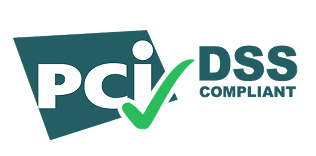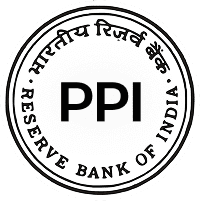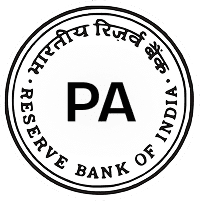Every business, no matter the size, relies on accurate financial records. But with payments flowing in from different platforms, keeping track of what was earned and what was actually received becomes harder over time. That’s where payment reconciliation becomes essential.
The term may sound technical, but its role is simple and powerful. Payment reconciliation ensures that every payment recorded in your system matches the actual deposit in your bank. It connects the dots between sales, settlements, and bank entries. Without it, the numbers on your reports may tell the wrong story.
When your merchant payment ecosystem includes multiple gateways, refund channels, and currencies, things don’t always line up the way they should. Mismatches, delays, and errors begin to creep in. Over time, these small issues can grow into major financial setbacks.
Many businesses still rely on spreadsheets or outdated tools. These may work early on, but as your operations grow, they become a weak link in your financial process.
In this blog, we will explore the payment reconciliation meaning, how to know when your current process is falling short, and why smarter methods can protect your business from avoidable risks.
What is Payment Reconciliation?
Before you can fix a broken process, you need to understand what it actually does. At its core, payment reconciliation is the practice of comparing your internal transaction records with what actually reflects in your bank account or payment gateway reports. If your system says a customer paid ₹1,000 but only ₹950 landed in your account, reconciliation helps you spot and resolve that gap.
The goal is to catch differences between what was expected and what was settled. These could be due to payment failures, gateway charges, refunds, technical delays, or even fraud. Without this process, it’s easy to miss signs that something is wrong.
In simple terms, payment reconciliation definition: it is the step-by-step process of ensuring that your books match your actual incoming payments. Think of it as a financial checkpoint between your sales and your revenue.
Understanding the payment reconciliation meaning becomes even more important as your transaction volume increases. With more gateways and settlement partners in the mix, the risks of missing or mismatched payments rise.
This is why businesses within a fast-moving merchant payment ecosystem need a reconciliation process that is both accurate and efficient.
The Changing Nature of the Merchant Payment Ecosystem
A few years ago, businesses mostly relied on a single payment mode, like card or cash. Today, things are different. Customers expect multiple ways to pay, from credit cards and UPI to wallets, net banking, and even BNPL services. To stay competitive, businesses need to support all these options, often across different platforms and partners.
This shift has created a complex merchant payment ecosystem. Instead of one gateway and one bank, businesses now juggle several gateways, currencies, and settlement rules. Payment cycles vary. Refund timelines differ by provider. Disputes are managed through separate dashboards. As a result, the chances of data mismatches have multiplied.
When every sale passes through different layers — shopping platforms, payment gateways, processors, and banks — the path between billing and settlement is no longer straightforward. Even a small delay or charge that goes unnoticed can lead to bigger accounting problems later.
This growing complexity makes the role of payment reconciliation even more critical. It is no longer just about checking numbers at the end of the month. It’s about building trust in your numbers every day.
In such an environment, knowing the payment reconciliation meaning helps teams understand the importance of matching data in real time. As your customer base grows and your payment channels expand, a simple mismatch left unresolved could affect your cash flow, reporting, or compliance.
Businesses that succeed today are the ones that can manage this complexity with accuracy and speed.
Read more: Merchant Payment Gateway Explained
Common Signs Your Business Needs Smarter Reconciliation
When your business begins to scale or your payment sources diversify, it’s easy to lose track of the gaps forming in your financial processes. Here are some clear signs that your current payment reconciliation method may no longer be enough:
- Mismatch Between Sales and Settlements
You notice that the revenue in your system does not align with the actual money received in your account. This is often caused by delays in settlements, gateway deductions, or missed refunds. Without proper payment reconciliation, these mismatches can go unnoticed for weeks. - Delayed Financial Closures
Your finance team struggles to close books on time because they spend too many hours manually matching transactions. As transaction volume increases, this delay can disrupt overall financial reporting. - Customer Refunds Take Too Long to Process
You receive complaints about refunds not being credited, or your support team cannot trace them. When reconciliation is weak, tracking each refund becomes a challenge. In the worst cases, customers lose trust in your brand. - Dependence on Manual Checks or Spreadsheets
If your team still relies on spreadsheets and copy-paste methods to reconcile, errors are bound to happen. As your merchant payment ecosystem grows, this method becomes unreliable and hard to scale. - Frequent Errors in Tax Filing or Payout Tracking
Errors in GST reporting, double entries, or missed payouts signal poor control over incoming and outgoing payment records. These issues are often traced back to a broken payment reconciliation process. - Team Burnout and Resource Drain
When your operations or finance staff spend more time fixing past errors than focusing on planning, it affects productivity. Time spent on reconciliation should be minimal if the system is working right. - Poor Visibility Across Payment Sources
You use multiple gateways but have no single place to monitor all incoming payments. This scattered view leads to missed entries and unresolved mismatches.
Business Impact of Poor Payment Reconciliation
When payment reconciliation is slow, inaccurate, or overlooked, it creates serious issues beyond simple number mismatches. These problems can hurt both your financial health and customer trust. Below are some of the biggest consequences:
- Cash Flow Disruptions
Unreconciled entries make it hard to predict incoming payments. Without knowing exactly what has been settled, businesses may face liquidity issues or delay planned expenses. - Inaccurate Financial Reporting
Errors in reconciliation directly impact your profit and loss statements. This leads to unreliable reports, which affect investor confidence and internal decision-making. - Delayed Tax Filing and Compliance Risks
Without a clear record of all payments received, tax calculations become flawed. This increases the chance of underreporting or overpaying, both of which can invite penalties. - Customer Experience Breakdowns
When a refund is issued but not tracked correctly, or a duplicate payment goes unnoticed, your customers feel the impact. A weak payment reconciliation system can result in more support tickets and damaged brand perception. - Vulnerability to Fraud and Errors
Mismatched records may hide fraudulent transactions or unintentional mistakes. If these are not spotted early, the financial loss could be significant. - Missed Opportunities for Cost Optimization
Without knowing exactly where deductions occur or how much payment delays are costing you, it’s harder to negotiate better terms with providers or identify loss points in the merchant payment ecosystem.
A strong payment reconciliation process protects against these outcomes and keeps your business running with control and clarity.
Read more: Best Payment Gateways in India
What Does Smarter Payment Reconciliation Look Like?
A smarter payment reconciliation process is not just about automating tasks. It is about bringing accuracy, speed, and control into a system that directly impacts your financial stability. Here’s what a modern, intelligent setup looks like:
- Automated Data Sync from Multiple Sources
Payments are collected through several gateways, wallets, and banks. A smart reconciliation system automatically pulls records from all sources and matches them with your internal data, reducing manual effort and risk of error. - Real-Time Monitoring and Alerts
Instead of finding mismatches weeks later, automated tools flag them the moment they occur. This allows your team to respond faster and avoid revenue leaks. - Rule-Based Matching Logic
Modern platforms let you define rules that align with your business model. This means fewer exceptions, faster approvals, and smoother processing. - Centralized Dashboard for Full Visibility
A single dashboard tracks all payment flows. It shows the status of each transaction, settlement progress, and unresolved issues. This level of visibility improves decision-making across departments. - ERP and Accounting Integration
Smarter systems connect directly with ERP and accounting tools, so reconciled data flows into your reports without delays or formatting errors. - Custom Reports and Audit Trails
Every action taken is logged and can be tracked. This makes audits easier and helps you stay compliant without additional effort.
Read more: What is a Payment Page? Importance, Design, and Best Practices
How to Transition to Smarter Reconciliation: Action Plan
Moving to a smarter payment reconciliation process can be done smoothly if you follow a structured plan. Below is a detailed, step-by-step approach that any business can adopt to make the shift efficient and long-lasting:
- Map Your Current Reconciliation Process
Begin by documenting how your team reconciles payments today. Identify where delays, mismatches, or repeated efforts occur. This gives you clarity on what’s working and what needs to change.
- Review the Entire Merchant Payment Ecosystem
Make a complete list of all banks, gateways, payment platforms, accounting tools, and internal systems. Knowing where payments are processed and how they flow into your accounts is the foundation of choosing the right system.
- Select a Tool That Matches Your Business Model
Choose a platform that supports real-time sync, handles large volumes, and integrates easily with your existing tools. Look for rule-based matching, auto-reconciliation features, and support for all parts of your merchant payment ecosystem.
- Involve the Right Teams Early
Bring in finance and operations teams when setting up the tool. Train them on not just how the system works, but also explain the deeper payment reconciliation meaning so they understand its role in protecting revenue.
- Set a Reconciliation Calendar
Make reconciliation a recurring task, not a last-minute one. Set daily or weekly checkpoints based on your transaction volume. Regular updates help avoid backlogs and make audits easier.
- Assign Clear Ownership
Define roles. Assign one or two people to oversee reconciliation tasks, respond to alerts, and resolve flagged issues. When responsibility is shared loosely, things often get missed. - Use Alerts and Automation Wisely Enable notifications for unmatched payments, delays, or reversals. These real-time alerts help your team take quick action before small errors grow into serious problems.
Read more: How Unified Payments Interface Works
Best Practices to Maintain Reconciliation Hygiene
Automation improves speed, but the real strength of payment reconciliation lies in consistent, disciplined practices. The following habits ensure accuracy, support compliance, and reduce risk as your transaction volumes grow:
- Stick to a Reconciliation Schedule
Set a fixed routine for daily or weekly checks. Waiting until the end of the month can allow small mismatches to build into major gaps. A regular schedule keeps issues under control and avoids last-minute panic.
- Always Match at the Transaction Level
Don’t rely on batch summaries. Match each payment using its unique reference number or transaction ID. This keeps your data clean and makes it easier to trace discrepancies.
- Flag and Resolve Mismatches Without Delay
As soon as mismatches appear, act on them. Delayed corrections can impact cash flow, reporting, and customer service. Create a workflow that ensures these cases are handled quickly and closed.
- Maintain Complete Records
Keep a clear record of all reconciled and unreconciled items. Include dates, sources, and actions taken. This provides a solid audit trail and supports faster issue resolution during reviews.
- Monitor Every Source in Your Merchant Payment Ecosystem
Include all payment gateways, platforms, and settlement partners in your process. Omitting any channel increases the chance of missed entries or untracked revenue.
Final Thoughts: Payment Reconciliation as a Growth Enabler
Most businesses view payment reconciliation as a backend task, something that must be done but never really looked at closely. In reality, it plays a key role in helping your company grow without friction.
When reconciliation is fast, accurate, and fully integrated into your workflow, your teams can make confident decisions. There are no surprises in the numbers. Delays are flagged before they turn into losses. Refunds are tracked, customer complaints are reduced, and audits go smoothly.
Understanding the full payment reconciliation meaning allows business leaders to treat it not as a routine task, but as a pillar of control. In a growing merchant payment ecosystem, this control means fewer errors, better reporting, and faster settlements.
The smarter your payment reconciliation process becomes, the more your team can focus on driving strategy, building products, and delivering value to your customers.








